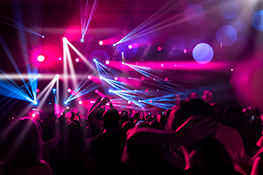Stage Lighting: From Dull to Dazzling in Minutes
Transforming Your Stage with Dynamic Lighting
Stepping into a well-lit performance space is like entering another world. The right lighting design can elevate a simple play to a breathtaking spectacle, a concert to a visceral experience, or a corporate event to a memorable affair. But achieving this transformation often feels like a daunting task. This article demystifies stage lighting, providing practical tips and tricks to help you move from dull to dazzling in minutes, regardless of your experience level.
Understanding the Basics: Color, Intensity, and Position
The foundation of effective stage lighting rests on three pillars: color, intensity, and position. Mastering these elements is key to creating the desired mood and atmosphere. Color choices dramatically impact emotion; warm hues like amber and orange evoke feelings of warmth and intimacy, while cool blues and purples create a sense of mystery or coldness. Intensity, controlled through dimming, allows you to highlight specific elements, create dramatic shadows, or build suspense. Finally, the position of your lighting instruments dictates where the light falls, influencing the overall visual impact.
Essential Lighting Instruments for Beginners
While professional setups boast an array of specialized fixtures, starting with a few versatile instruments is more than sufficient. LED Par Cans offer a wide range of colors and are incredibly energy-efficient. Fresnels provide a soft, even wash of light, ideal for backdrops or overall illumination. Ellipsoidals (LEs), with their sharp, focused beams, are perfect for highlighting actors or specific stage elements. Investing in these three types will provide a solid base for a range of lighting designs.
Quick Lighting Techniques for Immediate Impact
Even with limited equipment, you can achieve impressive results with strategic lighting techniques. Consider these quick wins:
- Backlighting: Placing lights behind your performers creates separation from the background, making them stand out. This simple technique dramatically improves visual clarity.
- Side Lighting: Adding side lights introduces depth and dimension, highlighting textures and creating shadows that add visual interest.
- Color Washing: Using a single color across the entire stage can dramatically alter the mood. A deep blue can suggest night, while a vibrant red might represent passion or danger.
- Spotlighting: Focusing light on individual performers or objects draws the audience’s attention and adds a sense of drama.
Utilizing Dimmers and Control Systems
Dimmers are crucial for controlling the intensity of your lights, enabling seamless transitions and creating dynamic effects. Simple dimmer packs are readily available for beginners, allowing for manual adjustments. For more advanced control, consider investing in a lighting console, which allows for pre-programmed sequences and automated lighting cues.
Safety First: Handling Stage Lighting Equipment
Always prioritize safety when working with lighting equipment. Ensure proper ventilation to prevent overheating, use appropriate safety cables, and never touch hot fixtures. Familiarize yourself with the safety guidelines provided with your equipment, and if unsure, consult a qualified technician.
Beyond the Basics: Exploring Advanced Techniques
Once you’ve mastered the fundamentals, explore more advanced techniques like gobo projection (creating patterns with light), moving lights for dynamic effects, and color mixing to create unique hues. Experimentation is key to developing your own unique lighting style.
Conclusion: Unleash Your Inner Lighting Designer
Transforming your stage from dull to dazzling doesn’t require years of training or a massive budget. By understanding the basics of color, intensity, and position, and by utilizing readily available equipment and techniques, you can create captivating lighting designs that enhance any performance. Start experimenting today and unleash your inner lighting designer!


 Auditorium Construction Services
Auditorium Construction Services 